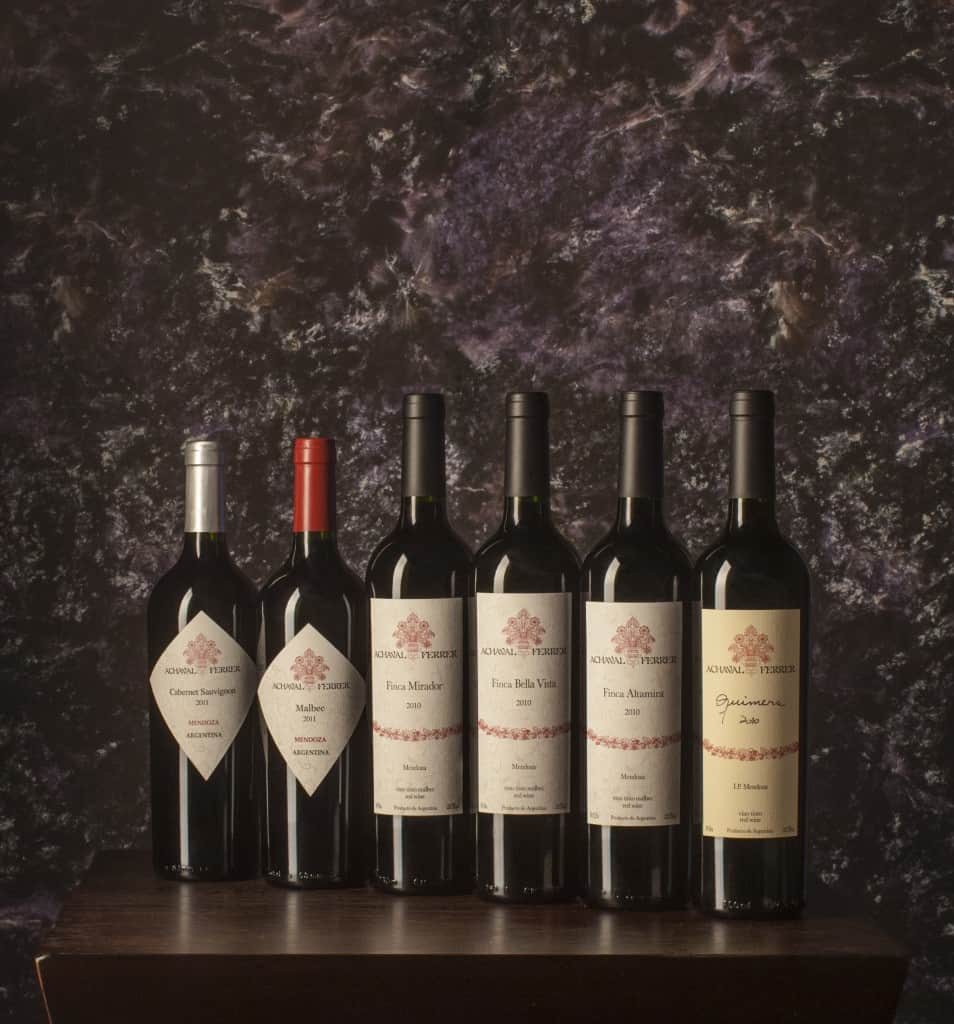More than Malbec in Mendoza – Winestudio Journey With Achaval-Ferrer
In May (yes, I know I’m behind on many great wines I’ve tasted since Vinitaly), the #winestudio folks brought together a three week virtual journey with Achaval-Ferrer from Mendoza. There is a misnomer that Malbec is all that comes out of Mendoza, and the Malbec from this vineyard is fabulous, but this journey was about Bordeaux-style wines from the region. Yes, you heard me right – Bordeaux style wines from Mendoza. For the record, Torrontes, Chardonnay, Cabernet Sauvignon as well as Malbec and the aforementioned Bordeaux blends are definitely a force in Argentinian wines of today.
Courtesy of Achaval-Ferrer
Gustavo Rearte, the winemaker at Achaval-Ferrer, led us through a history of the winery, its exploration into Bordeaux varietals including a Cabernet Sauvignon and an out-of-this-world first vintage, Cabernet Franc. Then we got to put our blind tasting skills to use as we received two bottles of different vintages of Quimera, a meritage with Malbec as the lead grape. Due to my work travel, I missed one session, so my notes are a reflection of research and the Twitter feed for that particular session.
First a little about Achaval-Ferrer. Achaval-Ferrer started in 1998 when a group of Italian and Argentine friends brought teamed up to fulfill their dream of making Argentian wine a force in wine culture. These guys set out on a mission not only to modernize the Argentian wine making process, but also starting work on the image of these wines. Even though Argentina has fantastic high altitude vineyards, amazing terrior, ideal weather conditions and established vineyards, the recognition for these wines has been pretty recent.
According to the website, the main pillars of production at Achaval-Ferrer focus on the smallest necessary intervention between the earth and what becomes a glass of wine. Ancient plants that are historical monuments of vine-growing, of extremely low performance, located on hills that are excellently exposed to the sun on the edges of the Tupungato and Mendoza rivers, and of course, privileged natural sites that lead to the most pure and honest of messages that the earth can give to us. I loved this quote, which was front and center, “When it comes time to describe the cellar´s seal, the analogy of an island between the Old and New Worlds come to mind.”
Achaval-Ferrer uses ungrafted vines, aggressively manages the yields of the vineyard and does not intervene by using sulfites, enzymes or filtration.
We tried several wines over the three-week period – two that were tasted blindly using the WSET Level 3 Wine-Lexicon and tasting sheets.
2015 Achaval- Ferrer Mendoza Malbec
The grapes were sourced from three distinct parcels within Mendoza. I got notes of violet, blackberry, spice, cherry and lots of herbs.
2015 Achaval-Ferrer Mendoza Cabernet Sauvignon
This wine was first produced in 2012. It was elegant with cassis, currant, red and black fruit, floral, spice and cedar.
2015 Achaval-Ferrer Mendoza Cabernet Franc
This was the inaugural vintage for Achaval-Ferrer’s varietal Cabernet Franc and was absolutely a crowd favorite. Lots of fig, blackberry, cherry, tar and green pepper (in and good way) and you could tell the volcanic ash of the vineyard made an impact. In fact, Morton’s quickly snapped up most of the bottles of this fabulous wine, which is only 1,000 cases total. These grapes grow in the Tupungato zone of Mendoza’s Uco Valley, with higher elevations and cooler climates. Definitely a wine that is meant to age.
Blind Tasting on World Malbec Day
Two packages came completely well wrapped (no peeking allowed) and we used the WSET Level 3 Wine-Lexicon and tasting sheets. We only knew we had two vintages of Quimera, the Bordeaux blend wine, for 2012 and 2013, one wrapped in triangle packaging and one wrapped in striped packaging.
I guessed correctly on my blind tasting. The triangle paper packaging was the 2012 vintage. I tasted blackberry, cherry, spice and a bit of blueberry pie. There was so greenness in this wine, but I think its evolution is going to be more interesting.
The striped packaging of the 2013 version was softer with vanilla, cherry, raspberry, licorice, pencil lead and herbal notes. This was more drinkable than the other immediately, but I preferred the 2012 on day two and beyond.
This was an awesome Argentinian exploration and learning for me. Bordeaux blends from Argentina are currently having their day and will only continue to get better for the taste, quality and value that they yield today.
Powered byTwitter









